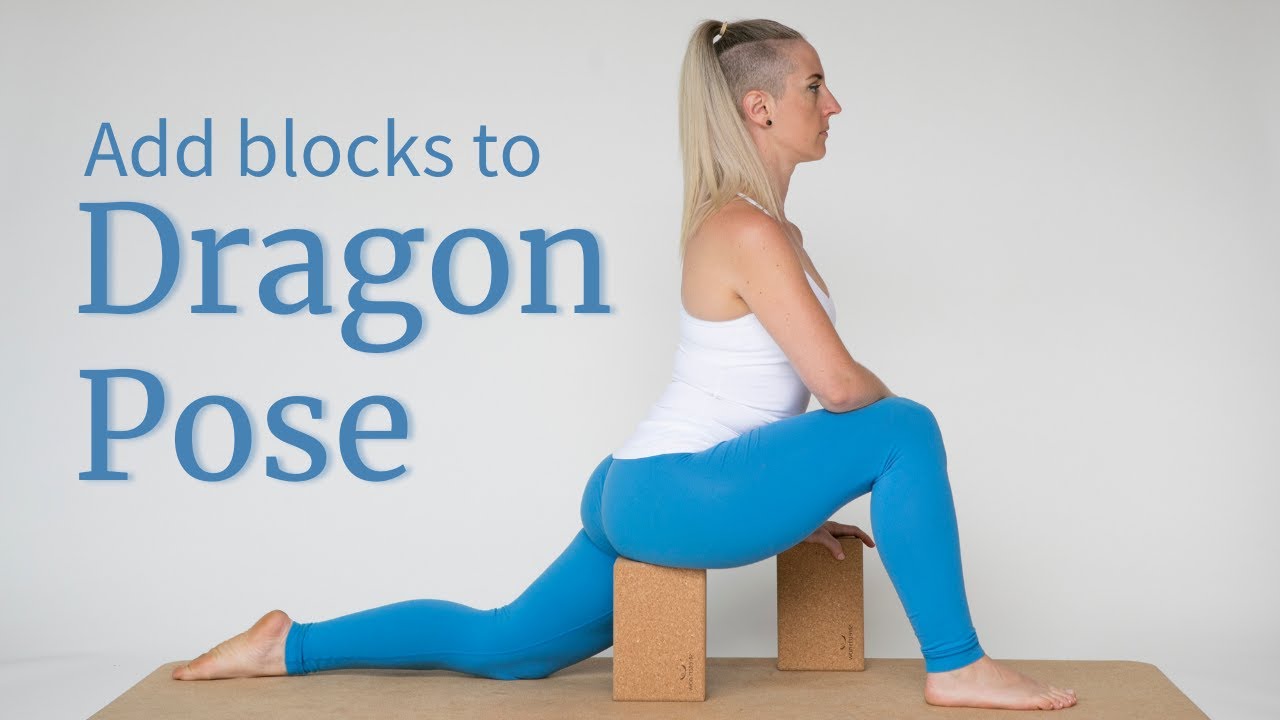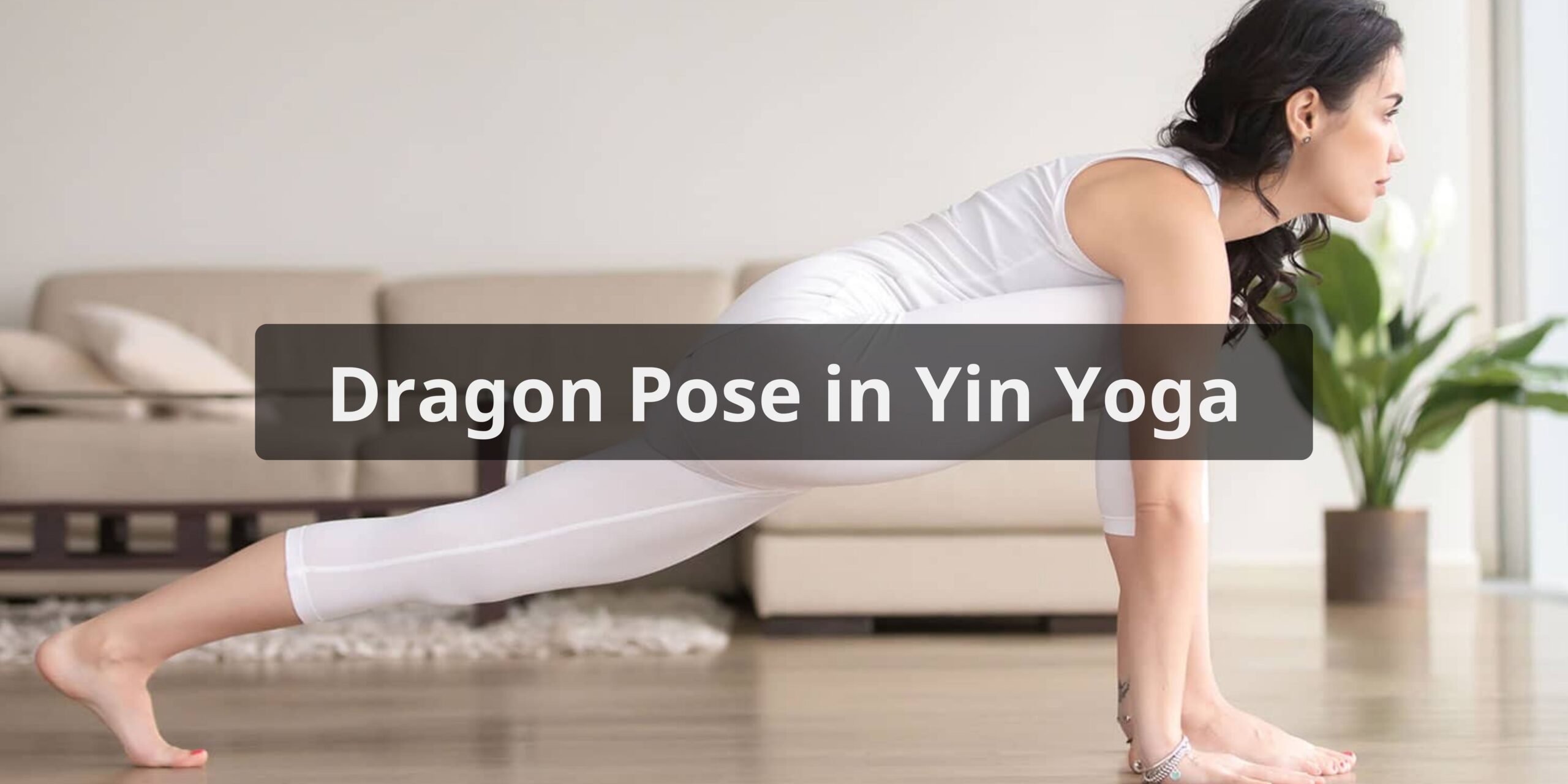Yoga is an ancient practice that connects the mind, body and spirit through physical postures, breathing techniques and meditation. Yin yoga is a slower, more meditative style of yoga that focuses on deeper stretching and longer holds. One key posture in yin yoga is Dragon Pose, which offers a variety of benefits for both the body and mind. In this article, we will explore dragon pose in yin yoga and its multitude of advantages.
What is Dragon Pose?
Dragon Pose, sometimes called Dragon Flying Low or Dragon Flying, is a kneeling posture that opens up the front of the hips and strengthens the thighs and knees.
To come into Dragon Pose:
- Kneel on the floor with your knees hip-width apart. Your shins should be perpendicular to the floor and your thighs parallel.
- Exhale as you lean forward, bringing your torso between your thighs. Drape your forearms inside your legs with palms facing up. Allow your shoulders to relax down.
- Your hips should be stacked over your knees. Keep your back long and your tailbone reaching back as your pubic bone reaches forward between your hip points.
Many yin yoga practitioners use props like bolsters or blocks under their torso in this pose to allow the hips to relax deeper into the stretch. Stay here for 3-5 minutes, breathing deeply into the front of your hip flexors.
Benefits of Dragon Pose in Yin Yoga
Holding Dragon Pose for an extended time offers tremendous benefits throughout the body:
Opens the Hips
Dragon Pose deeply stretches the hip flexors, inner thighs and quadriceps. The hip flexors especially become tight from prolonged sitting, so this posture helps unwind tension in those overworked muscles. Opening the hips promotes better mobility and range of motion.
Strengthens the Legs
Maintaining the kneeling posture and keeping the back leg straight strengthens the muscles of the legs. It tones the quadriceps and engages the adductors of the inner thighs. Stronger leg muscles support activities like walking, running and jumping.
Improves Digestion
The compression around the abdomen gently stimulates the digestive organs, aiding digestion and elimination. People with constipation issues may find relief in this pose. The massage of the organs also promotes the smooth flow of qi, or energy.
Calms the Mind
As a yin pose, Dragon Pose quiets the mind and calms the nervous system. The stillness and inward focus allows mental chatter to subside. Staying for longer holds deepens awareness of the breath. The meditative qualities can lower stress and anxiety.
Increases Flexibility
Approaching poses like Dragon with a yin intention increases flexibility over time. The long-held passive stretching allows connective tissues like fascia to safely elongate without risk of injury. Greater flexibility prevents problems like muscle strain.
Contraindications
While Dragon Pose offers many benefits, it’s not appropriate for everyone. Use caution or avoid Dragon Pose if you have:
- Knee injuries or discomfort
- Lower back issues
- Tight hamstrings that cause rounding of the back
- Hernia or abdominal organ issues
- Pregnancy (after first trimester)
Always listen to your body and come out of the pose if you feel pain or pinching.
How to Practice Dragon Pose Safely

Here are some tips for practicing Dragon Pose effectively and safely:
- Use props like blankets or blocks to support your body weight. This prevents excessive pressure on the knees or lower back.
- Keep thighs perpendicular to the floor to protect the knees. Do not allow the legs to splay out to the side.
- Engage your core to maintain a neutral spine. Do not overly round your back.
- Modify with upright arms against the wall if needed to support the torso.
- Start with shorter holds of 1-2 minutes and gradually increase over time.
- Pair dragon with other hip and thigh openers like pigeon pose or frog pose.
Sample Dragon Pose Yin Yoga Flow
Try incorporating Dragon Pose into your next yin yoga practice with this sample sequence:
- Butterfly Pose (3-5 minutes)
- Caterpillar Pose (2-3 minutes)
- Dragon Pose (3-5 minutes)
- Sphinx Pose (1-2 minutes)
- Legs Up the Wall Pose (5 minutes)
- Reclined Spinal Twist (2 minutes each side)
- Savasana (5-10 minutes)
Remember to move slowly between each pose and find your edge of intensity – not overly straining but feeling a deep stretch. Relax into each posture, allowing gravity to open your body. Focus on your breath moving through any sensations that arise. Dragon Pose in particular may elicit some strong feelings in the hip flexors and quads. Breathe into these areas, visualizing the fascia softening.
Conclusion
Dragon Pose is an excellent hip and thigh stretch that also strengthens the legs. The compression aids digestion while the stillness calms the nervous system. Approach this yin posture slowly, using props as needed. Dragon Pose offers numerous benefits when held gently for longer periods. Incorporate the “flying dragon” into your yin yoga routine 2-3 times per month to continually expand your flexibility and unwind tension. With its deeply restorative qualities for body and mind, Dragon Pose is sure to become a favorite.
FAQs About Dragon Pose Yin Yoga
How does the Dragon Pose target specific areas of the body?
The Dragon Pose in Yin Yoga primarily targets the hips, hip flexors, and quadriceps. It provides a deep stretch to these areas, promoting flexibility and releasing tension accumulated from sedentary lifestyles or intense workouts.
Can beginners practice the Dragon Pose, or is it more advanced?
Both beginners and experienced practitioners can practice the Dragon Pose. Beginners may use props or opt for gentler variations to accommodate their flexibility. As flexibility improves, they can gradually deepen the stretch.
Are there variations or modifications for the Dragon Pose?
Yes, variations exist to suit different flexibility levels. A supported variation using props or keeping the back knee down can make the pose more accessible. Experienced practitioners can explore more advanced expressions, gradually working towards a deeper stretch.
How long should the Dragon Pose be held during a Yin Yoga practice?
The Dragon Pose is typically held for 2 to 5 minutes on each side. Holding the pose for an extended duration allows the muscles and connective tissues to relax, promoting deeper flexibility and a sense of release.
What should be the focus of breathwork and mindfulness during the Dragon Pose?
Breathwork during the Dragon Pose should be deep and steady, focusing on inhaling to create space and relaxation in the stretched areas. Mindfulness can focus on observing sensations and allowing the body to gradually soften into the stretch.
Can the Dragon Pose be used to improve flexibility and hip mobility?
Absolutely, the Dragon Pose is effective for enhancing hip flexibility and mobility. Consistent practice encourages lengthening of the hip flexors and improved range of motion in the hips, benefiting daily movements and other physical activities.
Are there any contraindications or precautions for practicing the Dragon Pose?
Individuals with knee, hip, or lower back injuries should approach the Dragon Pose with caution. Pregnant individuals or those with certain medical conditions should consult a healthcare professional before attempting this pose.
How does the Dragon Pose contribute to the overall Yin Yoga experience?
The Dragon Pose enhances the Yin Yoga experience by offering a deep hip stretch, promoting relaxation, releasing tension, and improving hip flexibility. Its grounding nature aligns with Yin’s focus on mindfulness and holding poses to target connective tissues.

